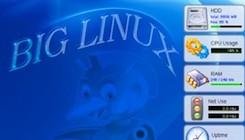My presentation was due and my computer choked. Ever have your settings get so far off, it's hard to know if it's a problem with your configuration or a bad hardware component? In my case, my dual-screen mode was acting up during my Xubuntu notebook installation, preventing me from using the presenter's console for an upcoming LibreOffice slide show. My quick fix was to run a diagnostic test using a stock Linux installation from a USB stick. No Compiz, no alpha/beta applications, no performance tweaks, no nothing.
Install Xubuntu Linux On A USB Stick You can run almost any version of Linux from a USB stick. Here's how you do it:
- Download your distribution of choice as an .iso file. I used the Xubuntu 64-bit version. Make note of the downloaded file location.
- Plug in a blank 2 GB or larger USB stick.
- Run the “startup-disk-creator” application. You may have to start it from the command line with temporary root privileges, if you get an error writing to the USB stick. Use: gksudo usb-creator-gtk.
- Look for your stick under the “Disk To Use” dropdown box. Highlight the correct stick and press the “Erase” button.
- If your distribution .iso doesn't appear in the “Source Disk Image (.iso) Or CD” dropdown menu, push the “Other” button and locate your file.
- Leave the “Stored In Reserved Extra Space” at the default value.
- Press the “Make Startup Disk” button.
The startup-disk-creator will download the software to the stick and set up a temporary file system and bootloader. Make sure it goes through all those steps. The process should take a couple of minutes. If it finishes in a few seconds, something is wrong and the stick will never boot. USB sticks can be kind of finicky, so you may have to restart the disk creator process once or twice. After the process completes, restart your notebook and boot using the USB stick. My Asus requires hitting the escape key a few times when restarting, just to get the boot menu. USB sticks are notoriously slow to boot. However, they're considerably faster than booting from a CD. Be patient and follow the prompts, selecting “Try” Xubuntu. Within a few minutes, you should have a fully functional Xubuntu Linux running on your notebook. Another thing to note is USB sticks also don't require a hard-drive. You can actually remove the disk, and Linux will run completely in memory and from the stick. Can you think of any interesting applications for this functionality?
Fixing My Dual-Screen Issues
In the end, my hardware turned out to be OK. I just needed to adjust the Nvidia settings to “twinview” and set the external projector (monitor) to “primary”. LibreOffice immediately started the presenter's console on my notebook screen and put the slides on the external projector screen. Perfect! I rebooted from the hard drive, made the adjustments and everything was set for my next presentation.
Related Links


